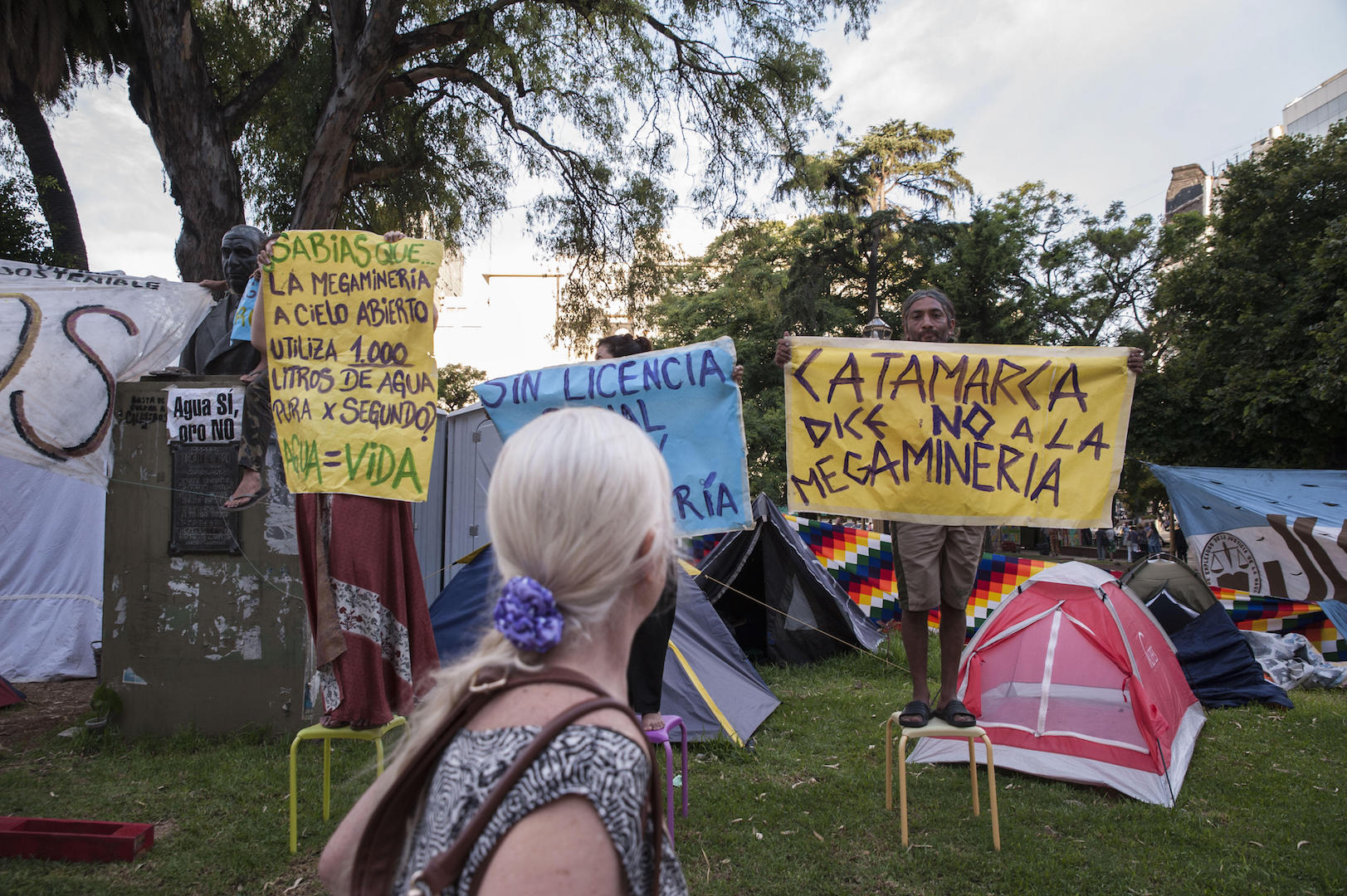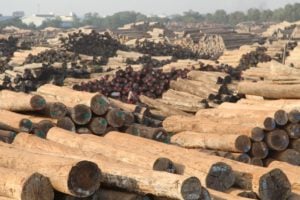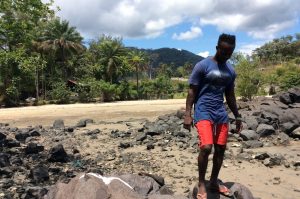On April 10 this year, a group of hooded people threw molotov cocktails setting fire to the offices of the mining company Agua Rica, in Andalgalá, in the Argentinian province of Catamarca. The fire started during a protest against the mining company by residents, as they had every Saturday.
A prosecutor, who previously worked for the mining sector, ordered the arrests of 12 residents. Most spent two weeks in prison.
On the day of their release, more than 5,000 kilometres away from Andalagá, in Honduras, eight other people were serving between 20 and 30 months in prison. They remain in detention after a series of protests against a mining project run by Inversiones Los Pinares. They are part of a case in which 32 residents, including one who has died, are being tried for “illicit association” because of their protests.
The two cases show the social unrest that greets the expansion of mining across Latin America. Communities throughout the region reject existing and future projects due to the social and environmental consequences they could generate – an argument rejected by mining companies.
Environmental campaigners against mining in Latin America
According to the latest report by the NGO Global Witness, more environmental activists are murdered in Latin America than any other region of the world, with two-thirds of cases in 2019. Colombia sits top of this grisly list, with 64 killings.
284
social conflicts in Latin America relate to mining, according to the Observatory of Mining Conflicts in Latin America
To date, the Observatory of Mining Conflicts of Latin America (OCMAL) registers 284 “social conflicts” over mining. The majority are in Mexico, Chile and Peru, followed by Argentina, Brazil and Colombia. Behind those figures there are people. And behind each of them, a family and a community.
Despite the growing influx of Chinese capital and the significant presence of British companies, more than half of the mining ventures in the Latin America continue to be owned by Canadian companies.
Such is the case of the Fénix mine, on the north shore of Lake Izabal, in Guatemala, located in territories claimed by the Mayan Q’eqchi community. The dispute with the local community led to three lawsuits in the Ontario Superior Court of Justice for indictments against Canadian companies HudBay Minerals and HMI Nickel, and their subsidiary CGN.
The first of these lawsuits relates to the alleged sexual abuse of 11 women, on January 17, 2007, by police, military and security personnel wearing clothes from the mining company CGN, during the expulsion of a hundred families from the Lot Eight community. The case is still ongoing.
One of the victims, Rosa Elbira Coc Ich, said that nine men broke into her house asking for her husband, and then raped her. Today, she is unable to have children, possibly due to the injuries she suffered. Among the other victims are pregnant women who lost their babies.
During the trial, the mining companies had to deliver some 20,000 internal documents to the plaintiff, Grahame Russell, director of Rights Action, one of the NGOs that works with affected communities. He said: “There is evidence that CGN paid hundreds of thousands of dollars to the soldiers and the police to carry out the evictions.”
The company denies the accusations.
Attritional strategy
The Canadian Pan American Silver is another of the flagship companies in the region, with a presence in five countries. In Mexico it operates two projects, including La Colorada, in Zacatecas, the company’s largest mine. It opened in 2004 and a decade later began a process of expansion that unleashed a conflict over use of the land with the inhabitants of the area.
The water looked like tamarind juice
On January 13, 2017, Pan American Silver security personnel armed with weapons forced 46 families to vacate the land that their community had occupied for almost a century. Their houses were destroyed and they were all relocated to tin houses that they were loaned, within a housing complex located 200 metres from the entrance to the mine.
Residents say that everything is part of a strategy of attrition to force them to leave the area, which began when the mining company fired employees who lived in the community. They add that they cannot even hold a birthday celebration outside their homes and that noises are not allowed after 11pm.
Merry Christmas?
Pan American Silver is now trying to move forward in Chubut, southern Argentina, with the Navidad (Christmas) project. But this has been subject to alleged corruption claims by the local community, including the case of a provincial deputy who was covertly recorded asking for money to lobby in favour of Pan American Silver. The deputy said the video was recorded before he took office.
Open pit mining and the use of cyanide are prohibited in the province of Chubut, after a popular consultation in the town of Esquel, in 2003. This means that for the project to happen the local legislature would have to first re-authorise mining in the province. The government has already sent a bill to the legislature.
In total, OCMAL has counted 39 popular consultations over mining in the region, but they are concentrated in only six countries. However, governments have not always recognised these votes and have sometimes used legal instruments to circumvent their results. Many have managed to modify, delay and even stop projects.
Another form of direct participation is prior consultations, but they are usually a mere formality. In Honduras, there was an open local government session in 2019 to discuss Inversiones Los Pinares’ ASP1 and ASP mining sites. Over 3,500 people participated, who agreed to declare the area free of mining. The company, however, said that the result “does not at all affect” its operations.
“We ran into a terrible wall at all levels: municipality, central government and company,” recalls Juan Antonio López, a resident of Tocoa, in northern Honduras, and an opponent of the mining project.
The conflict in Honduras began in April 2018, during construction of access roads to the mine. Dust produced by clearing a path for access routes is often the first tell tale sign of a mining company’s arrival in earnest. In the Pascua Lama binational project between Chile and Argentina, Chilean authorities stopped the works because they detected the presence of a layer of dust on two glaciers.
Back in Honduras, dust was visible in the Guapinol and San Pedro rivers, and in their tributaries. “The water looked like tamarind juice,” the residents recall. This mobilised communities that had not previously protested.
The villagers took over the municipal building for two weeks. They blocked the access road to the company and halted activity. They called for dialogue with the government, but the authorities invited them to negotiate a financial settlement with the company. “They even told us that the State was not responsible for what might happen to us,” recalls López.
During one of the many protests, a shot came from a company vehicle that wounded a protester, according to residents’ accounts of the events. The company rejects this. Residents reacted by kidnapping the mine’s security chief, who was later handed over to the police. The State’s response was to bring criminal proceedings against 18 residents.
In February 2019 another 14 people were indicted. They were accused of committing six crimes, including that of illicit association.
A recent investigation by Mongabay found that between Peru, Colombia, Mexico and Ecuador, 156 environmental defenders have been ‘criminalised’, 58 of them for conflicts related to mega-mining.
This publication is republished from of a journalistic project led by Periodistas por el Planeta (PxP) and is reproduced under a Creative Commons License.







